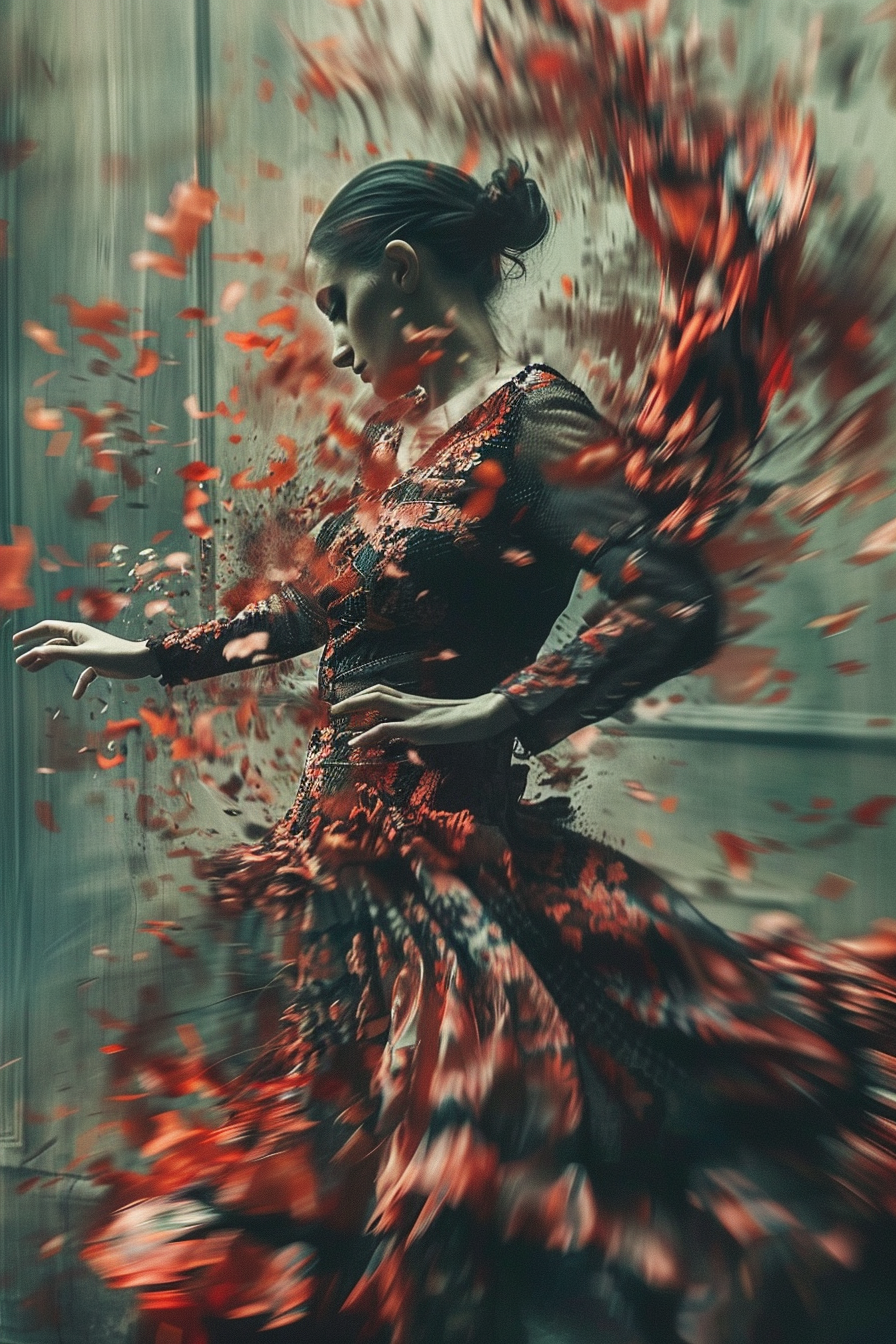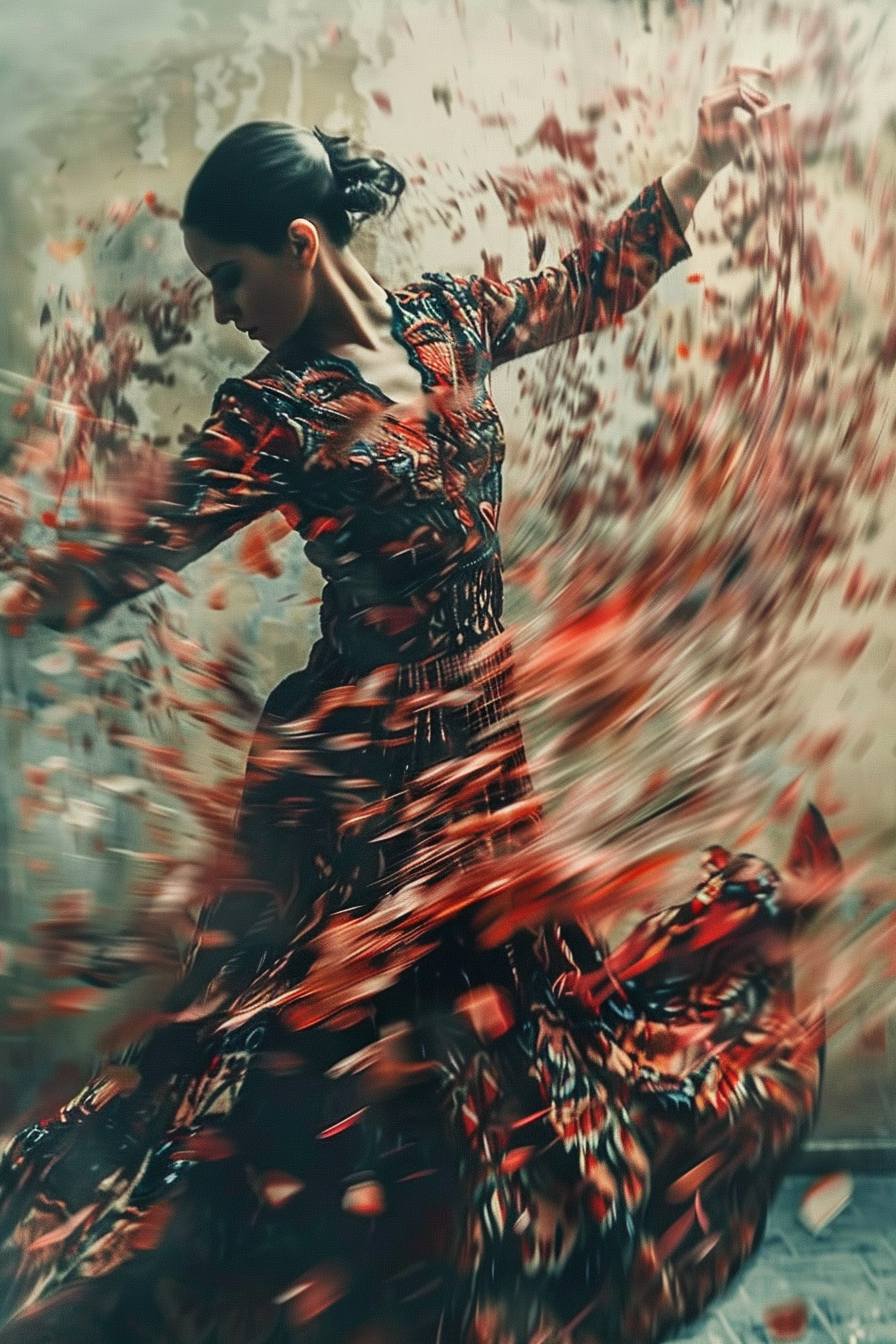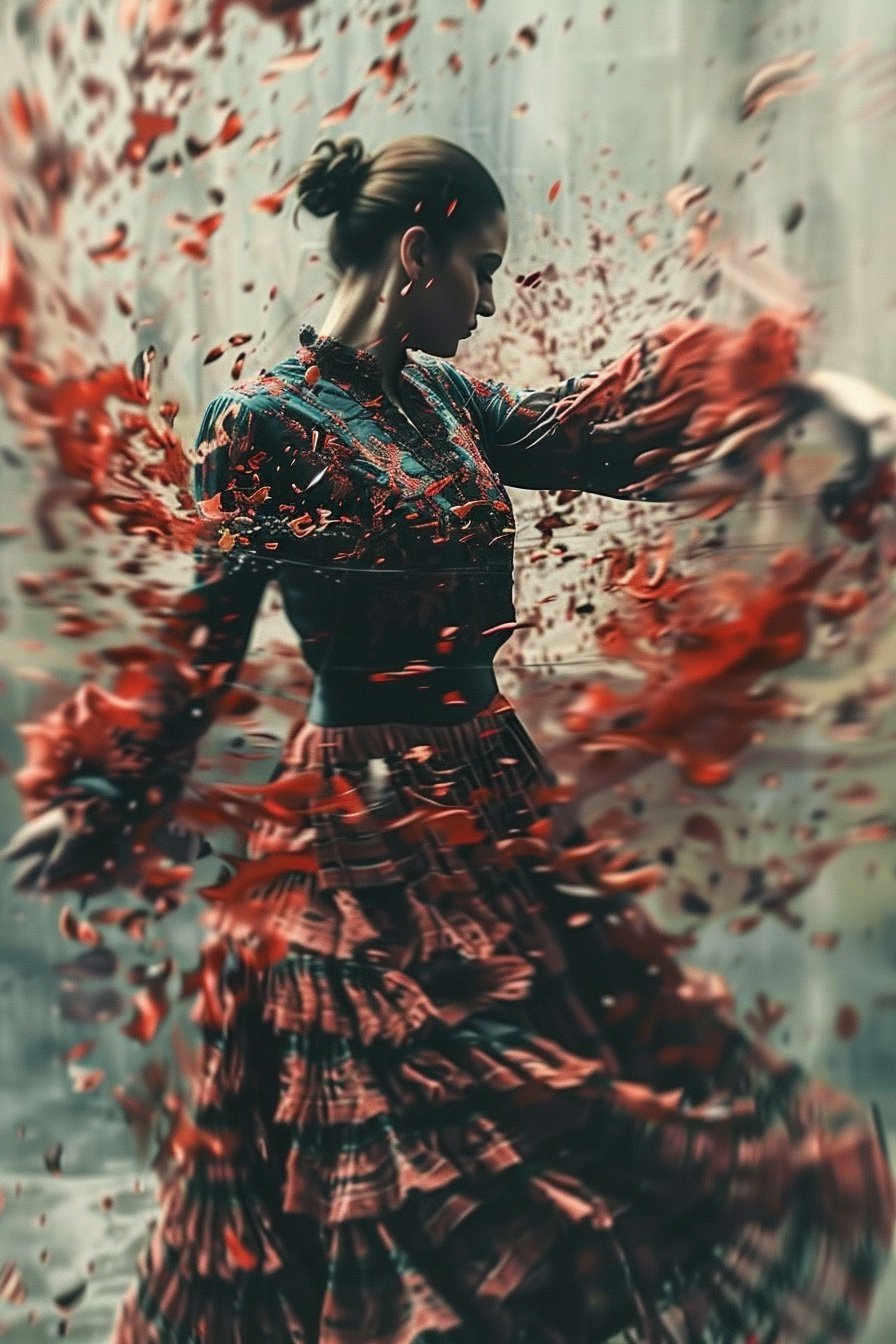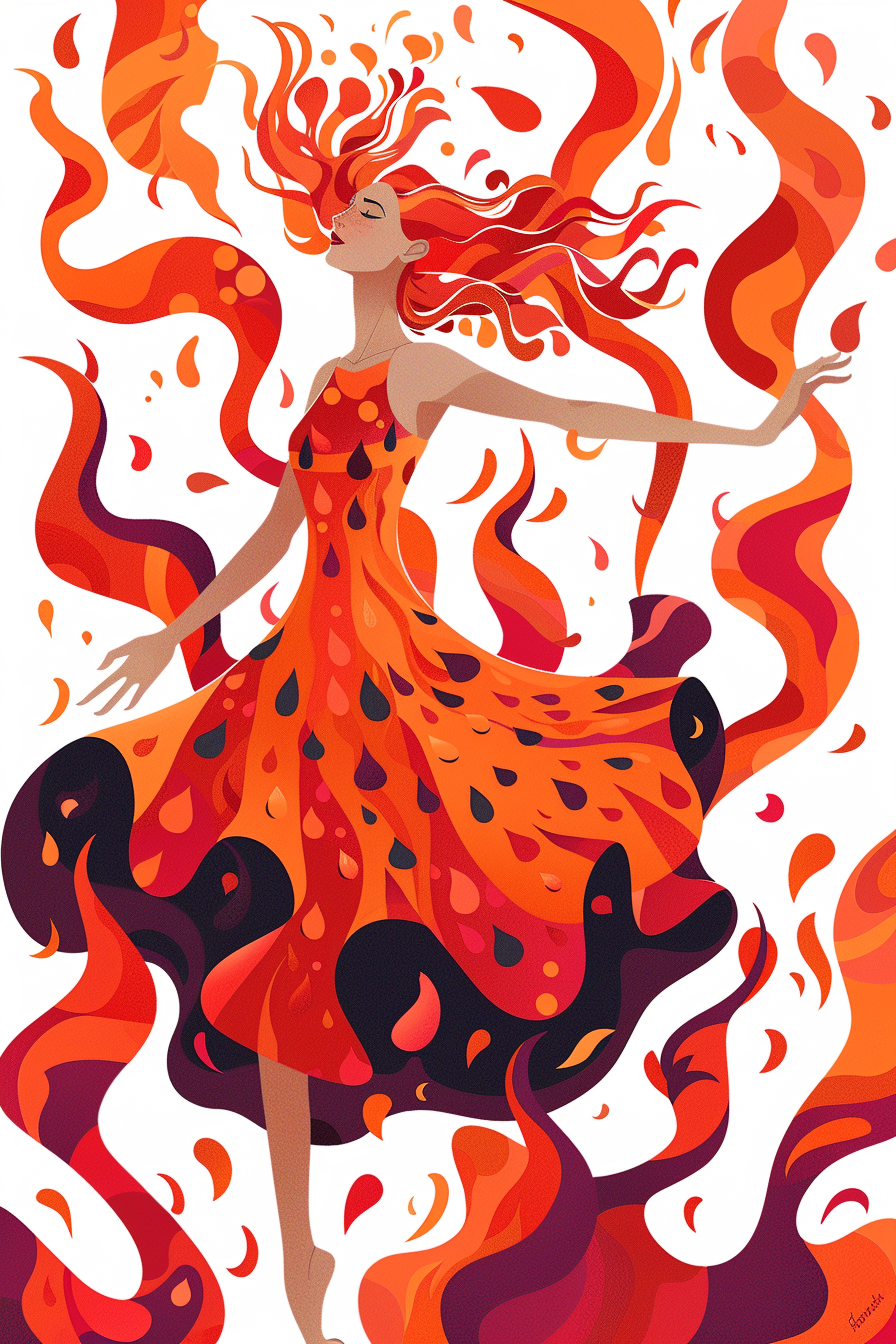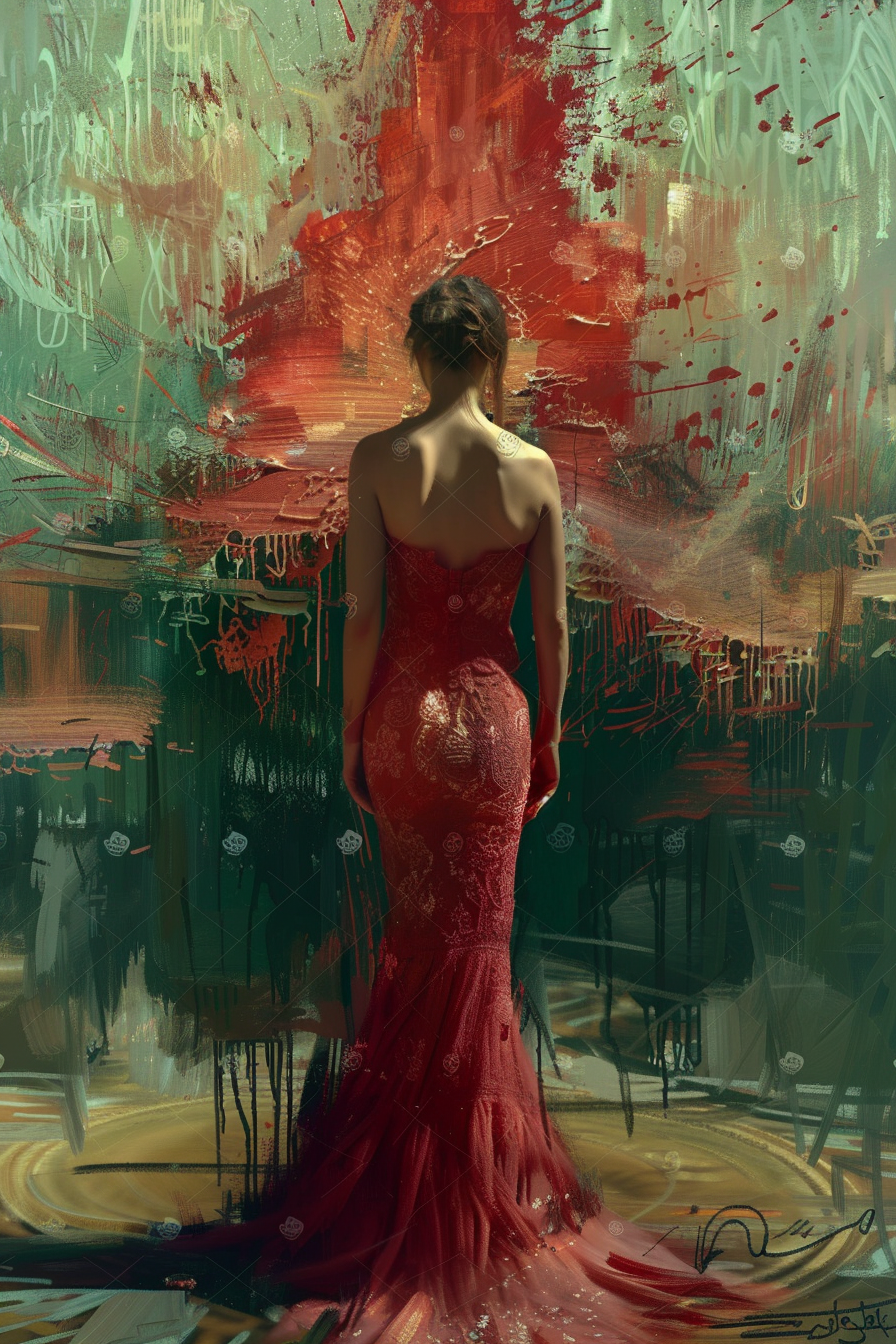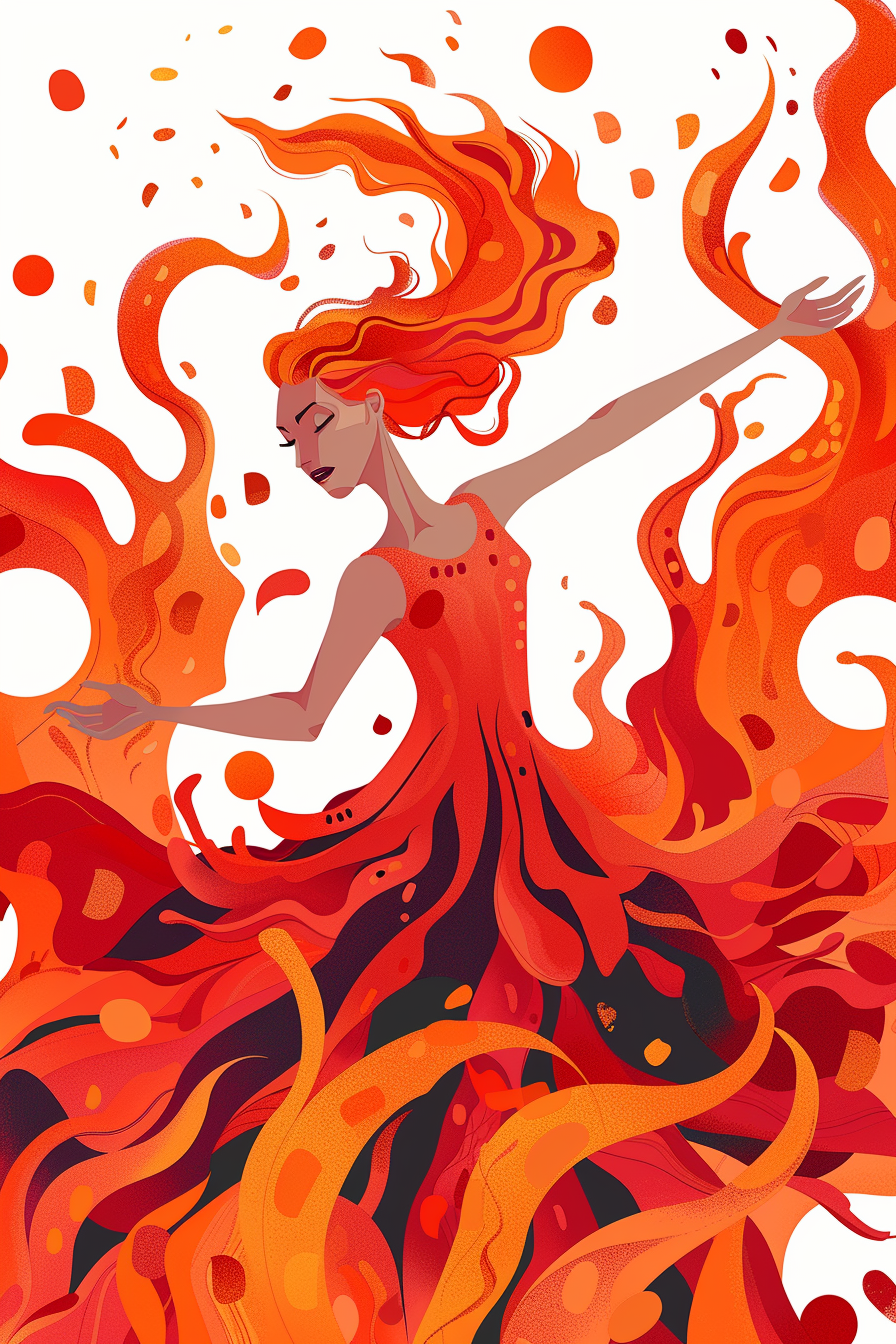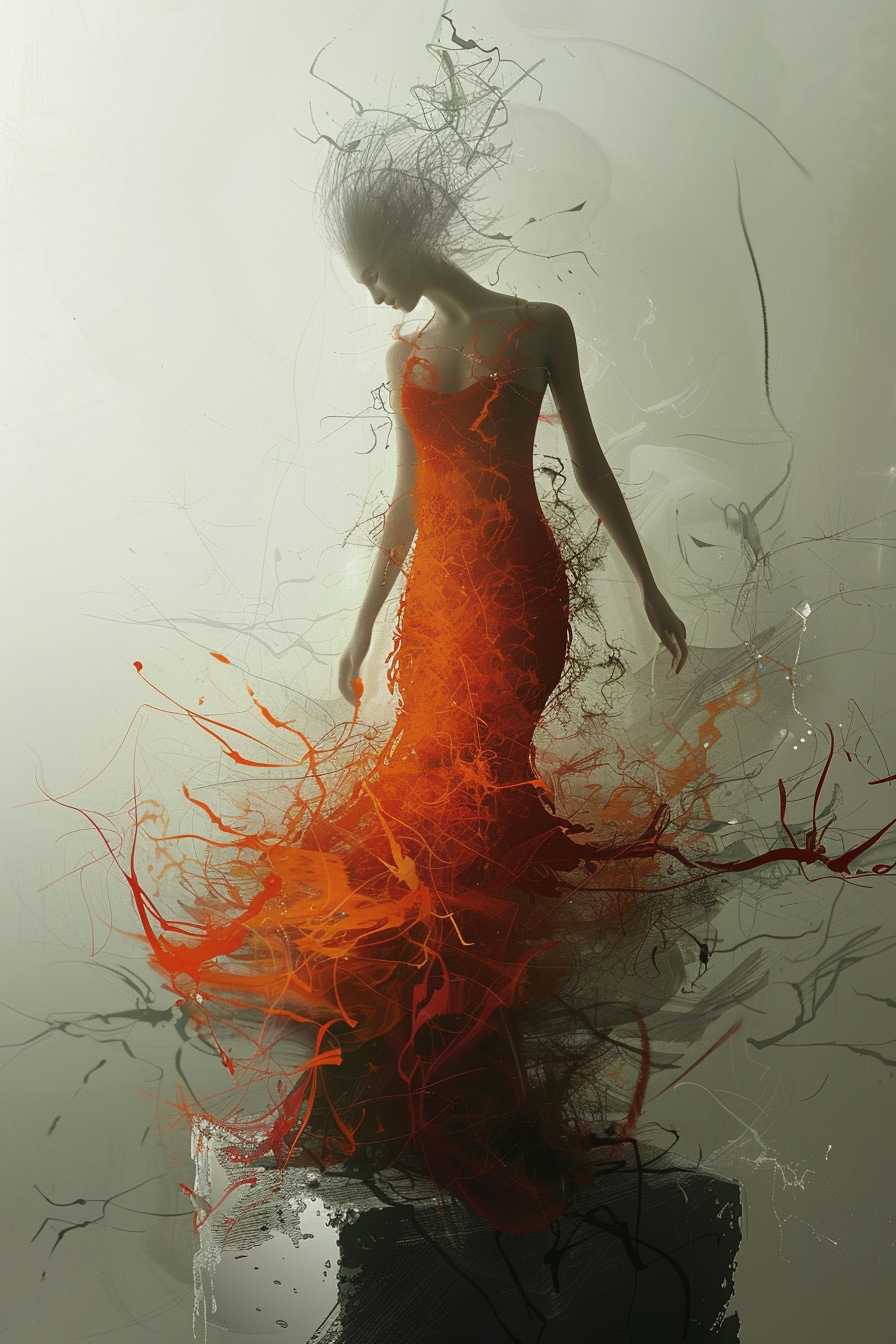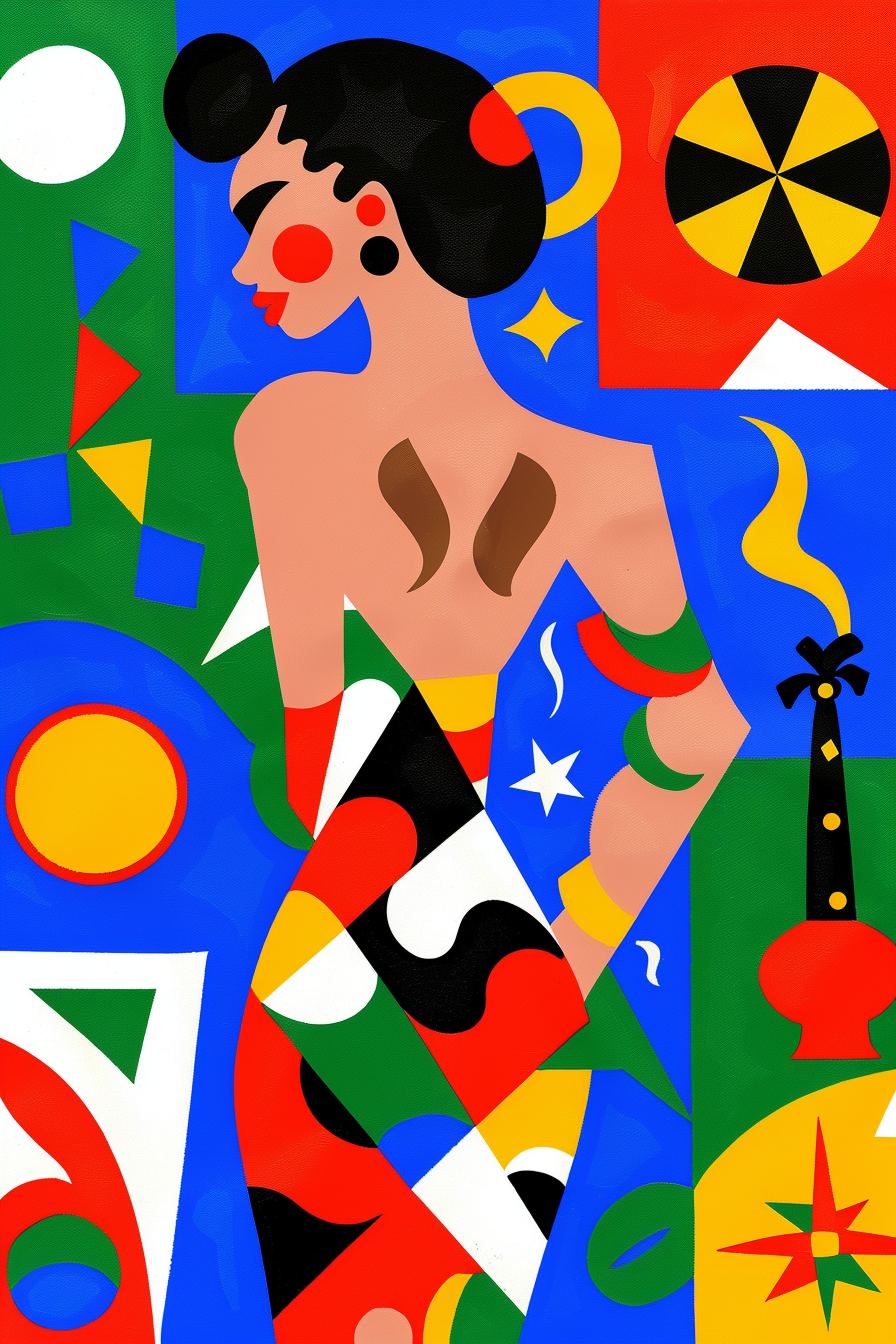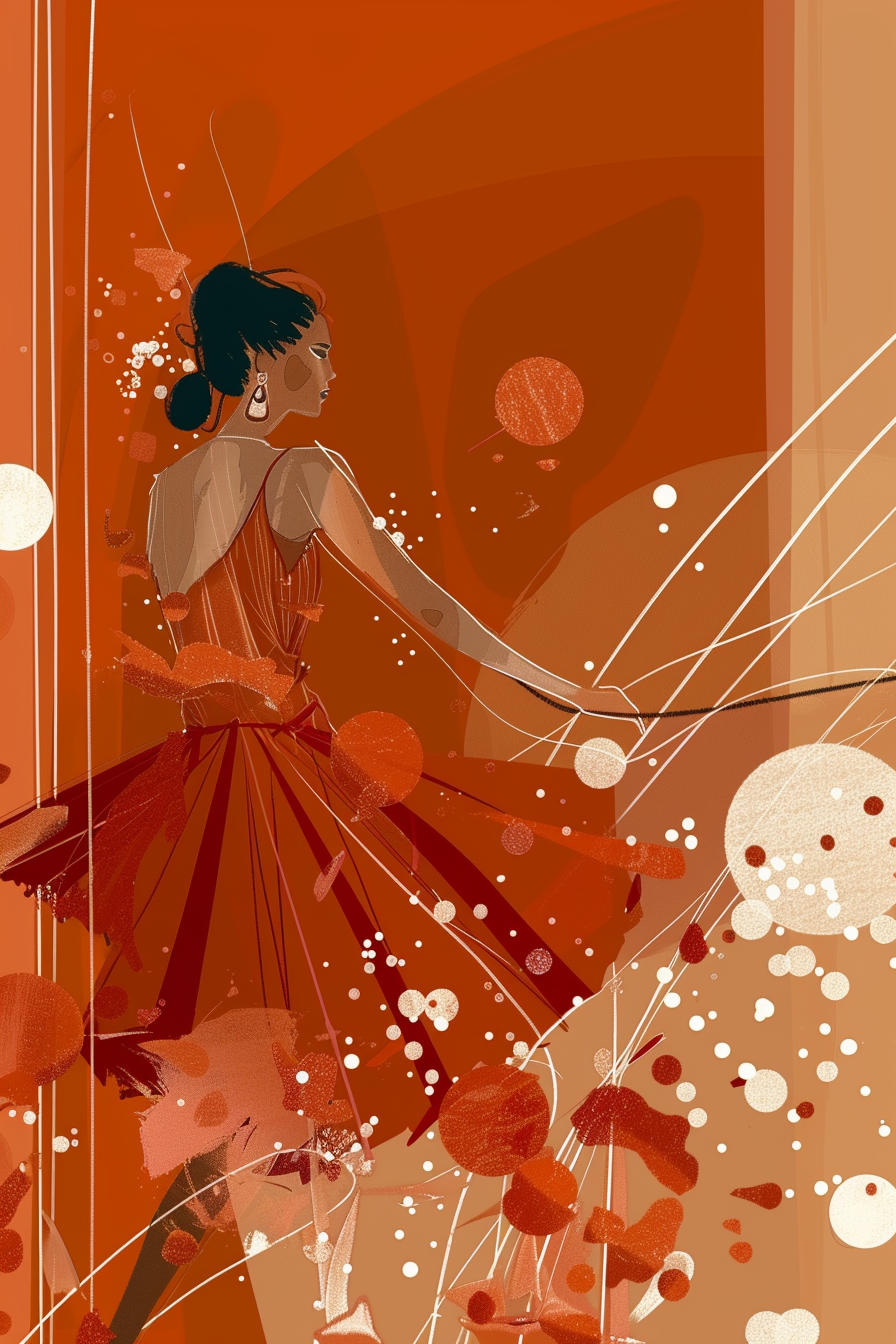The Soulful Echoes of Flamenco: Spain's Intangible Heritage
The Fiery Heartbeat of Spain
Flamenco is not a dance but an emotion embodied in the ecstatic rhythm of feet and the melodious strum of the guitar. In this blog post, we will take the needle deep into the groove of Flamenco: its origin, cultural impact, and why we are still obsessed with It.
Origins and Evolution of Flamenco
The Mosaic Roots of Flamenco
To understand Flamenco is to explore a significant layer in the historical sedimentation of Spain, a place that went from being a cultural mixing pot – the crossroad of diverse cultures that eventually found their way into giving birth to this singular artistic form – to an identity model in the aftermath of the Reconquista, the military and political offensive launched by the Spaniards at the end of the 15th century to regain control over their peninsula from the Moors. The emergence of Flamenco in the Andalusian region of Spain was an expression of cultural fusion, where the traditions of the Gypsy, Musulman, Hebrew, and Andalusian folk contributed to its creation over several centuries to produce something beyond the sum of its parts: a powerful and visceral expression of feeling and life through the art of music and dance.
Gypsy Influence and the Soul of Flamenco
Often considered the inventors of Flamenco, the Roma – known as Gypsies in English – arrived in Spain in the 15th century. For centuries, they brought a wealth of musical culture to Spain, which would dramatically influence the formation of Flamenco. The experiences of exile and marginalization that the Gypsies had experienced as a fledgling community greatly influenced Flamenco’s emphasis on suffering, joy, and resilience, which remain vital to the genre today.
Andalusian Flamenco: A Cultural Crucible
Especially given its Moorish legacy and role as a cultural crossroads, Andalusia became the perfect place for Flamenco to fusionise. The main centers of Flamenco are in areas such as Seville, Cádiz, and Jerez, but the actual growth of Flamenco can be found in the taverns, mines, and countryside of the region. It developed as a language of the people, particularly the working class and minorities who couldn’t escape with their unique stories of oppression.
The Golden Age of Flamenco
The Golden Age of Flamenco, which lasted from the late 18th century to the early 20th century, saw the art form transition from a predominantly vocal tradition to one that integrated the guitar (toque), dance (baile), and the palmas, tartapataz, and jaleos (or shouts) that accompany a performance. This evolution was significantly influenced by the emergence of Cafés Cantantes, which acted as cultural hubs and helped Flamenco spread throughout Spain and beyond.
Flamenco’s Evolution into a Global Phenomenon
After gaining international recognition, Flamenco was cemented as a song form for the 20th century. The era of recording and film drew attention to Flamenco’s allure and spread its fame throughout the globe. More importantly, with performers such as Carmen Amaya and Paco de Lucía, Flamenco became a force unto itself, crossing between genres and coming into its own.
Preservation and Innovation
In 2010, UNESCO acknowledged Flamenco’s cultural importance by declaring it an Intangible Cultural Heritage of Humanity. This declaration reminds us that Flamenco is a living art form that must be preserved. It can also evolve and be open to innovation while retaining its relevance to those who continue to create for an ever-growing global audience.
The history of Flamenco shows that the force of cultural exchange and interchange is unbreakable and undefeatable. Flamenco started as a tiny seed in Andalusian soil, watered by countless streams worldwide. When it grew into a strong tree, its enormous shadows covered half the globe, and its branches still spread its leaves, singing about the past and dancing in the present.
The Elements of Flamenco: A Symphony of Passion and Precision
The world of the soul, a term that fits Flamenco perfectly, results from the ever-changing blending between many elements: the soles of shoes, the feet, and the essence of the ‘Duende’ or ‘they.’ Flamenco is dance. It is a song. It is musical accompaniment. It is handclapping. It is a complex world that defies attempts to categorize and partition it neatly. Above all, Flamenco is an expression of the human spirit, an allegory of the profound meaning of being alive. In this chapter, the foundational elements of Flamenco, Cante (song), Toque (guitar play), Baile (dance), and Palmas (handclaps) are discussed.
Cante: The Voice of Flamenco
At the heart of Flamenco is the Cante, or song, which ranges from the deep, soulful cante jondo to the lighter, festive cante chico. Originating from the diverse cultural influences that shaped Flamenco, cante is more than just singing; it's a raw, emotional outpouring that narrates stories of love, despair, joy, and injustice. The cante jondo, with its profound emotional depth, is especially revered for its ability to move both performers and audiences alike.
Toque: The Flamenco Guitar's Narrative
Toque refers to flamenco guitar playing, which accompanies flamenco singing (cante) and dancing (baile). The flamenco guitar differs from the classical guitar because it has a brighter, more percussive sound.
Key Techniques
Rasgueado: Rapid strumming for a powerful sound.
Alzapúa: Thumb technique for fast passages.
Picado: Fast scales with alternating fingers.
Golpe: Percussive tapping on the guitar body.
Arpeggio: Flowing chord notes.
Palos (Styles)
Soleá: Deep and solemn.
Bulerías: Fast and complex.
Alegrías: Joyful and festive.
Tangos: Rhythmic and upbeat.
Fandangos: Varied and improvisational.
Role and Evolution: A tocaor listens and responds to singers and dancers as if in conversation, engaging in a constant dialogue that shapes the performance. Many modern flamenco guitarists followed Paco de Lucía's footsteps, who drew on jazz, classical, and world music influences and continued to extend the flamenco practice.
Elegance in Motion
Baile: The Dance of Expression
There would be no Baile, the dance of Flamenco – the most sublime visual expression of emotion and story, and a proudly identifying cultural medium – if not for the powerful zapateado (foot-percussion) that powerfully punctuates the ground, nor the labrueza (grit) that seems to invoke the elemental forces; nor the florituras (flowery hand and arm movements) that create a symphony of braces and twists; nor the larga tijeras (wide and cutting) presence of the Otelo de la Yerbabuena, dancer. And there would be no Baile, a unique expression and cultural narrative of the human spirit, without the imposing, destabilizing, heart-lifting energy from its musical roots in the cante jondo (deep song), or its less somber yet equally compelling kin, the cante chico (light song).
Palmas: The Rhythmic Pulse
Palmas, the handclapping, is not just the rhythmic bottom of Flamenco; it was and is one of the earliest and most elemental ways an audience can join in and help make Flamenco a communal experience. It’s not just music-semantic; it’s also how an audience is encouraged to become a part of the music. It creates beats that help the music and the dance to happen. It produces complex rhythms, the palmas sordas (soft, muted claps) in more intimate genres, and the palmas claras (loud, hard claps) when the performance needs to be more in your face. The ‘goading’, as it has been called, is meant to keep, importantly, to interact with the communal atmosphere quintessential to Flamenco.
The Unified Soul of Flamenco
As the various elements of Flamenco — Cante, Toque, Baile, Palmas — convene, each lending its presence and becoming one with the whole, they collaborate in a highly personal and yet universal expression of the human condition — a cooperative effort, a narrative in which each element has its distinctive voice. Flamenco art — one that invites participation and communion — encompasses order and free-flowing impulses; it ignites the spirit and calms it; it touches the heart and cleanses it. Flamenco is an art form constantly moving, thriving, surviving, and crystallizing as a living tradition.
Flamenco Today: Preservation and Innovation
Even in Flamenco’s stylistic diversity, we find threads of tradition and threads of innovation. The traditional preserves its essence as it is reborn in the innovative, and vice versa. Flamenco is timeless and changing—deeply rooted in the past while reaching forward in time. In this chapter, we shall see how modern-day practitioners respect Flamenco’s traditions while also keeping them alive and vibrant in the present.
Preserving the Pillars of Tradition
Guarding the essence of Flamenco’s tradition is not just important; it's a shared responsibility of practitioners and fans alike. The UNESCO Proclamation 2010 named Flamenco an Intangible Cultural Heritage of Humanity was a significant step in this direction. It emphasized that its roots need to be preserved worldwide. Schools and peñas (Flamenco clubs) throughout Andalusia and beyond are teaching Flamenco’s traditional forms – from the sung cante jondo to the tapped baile footwork – so that future generations can learn the art form of Flamenco’s past. This preservation is a commitment we all share.
Innovation and the Global Stage
While respect for tradition is the root of Flamenco, the spirit of invention keeps it agile. Modern Flamenco artists, with their daring experiments and influences from jazz, Latin music, or even electronic genres, are not just expanding Flamenco’s horizons but also keeping it alive and vibrant. In the process, the hybrid effects make Flamenco more eclectic and reach out to new cultures, making it an art form that can speak to us all.
Technology's Role in Flamenco's Evolution
Technology also enables Flamenco to grow and find new forms (ie, it shapes Flamenco). Flamenco performances, courses, and cantaoras can be found on websites all over the globe, with everyone’s voice being audible and allowing spaces to develop independently of their geographical location. Flamenco has become one global family. Social media or streaming services provide an arena for archival footage and tapes to be stored and for up-and-coming cantaoras to post their current interpretations, which in turn helps to create the ever-changing art of Flamenco.
The Future of Flamenco: A Dance of Continuity and Change
While the interplay between flamenco's desire for continuity and the gradual undeniable change in style is fragile, the future looks as colorful as the past. Flamenco's dedication to style and willingness to embrace novelty will contribute to an unfolding story. With its complex traits and ‘raw’ expressions, Flamenco will remain an intriguing example of a cultural artifact eagerly adapting, surviving, and giving voice to different people at different ages and places.
Embracing Flamenco's Living Legacy
And so Flamenco is a living, breathing relic of the past, this constant diachronic kinetosis of tradition. It is simultaneously a mirror of the past and an origin for the future, and, most crucially of all, it is alive. Flamenco’s journey from the deep south of Andalusia to the world stage is of stigma, emancipation, and aesthetics. There is a timelessness to the art form that remains ever-present. It is a dance, a song, a story that does not stand still.
Final Thoughts: The Eternal Flame of Flamenco
Flamenco is a testament to the philosophy of Spanish music and dance; it reflects the most profound human feelings and an art form that its humble and noble history has nurtured. It is an art form that will live on forever in people's hearts from around the globe.

